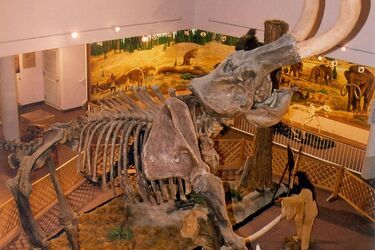Reviving mammoths: why this scientific experiment could become a global problem for the Earth

Modern technology allows scientists to restore extinct species using genetic engineering. However, the question is not only whether we can bring these species back, but also whether we should.
Some experts warn that the resurrection of mammoths and other species could have unpredictable consequences. Live Science writes about this.
Revival of extinct animals
The American biotechnology company Colossal Biosciences intends to restore three important extinct species: the dodo (Raphus cucullatus), the Tasmanian wolf (Thylacinus cynocephalus), also known as the thylacine, and the woolly mammoth (Mammuthus primigenius). Their goal is to improve biodiversity and bring back species that once had a significant impact on their ecosystems.
However, some scientists warn about the possible negative consequences of this project. For example, Oswald Schmitz of Yale University believes that the return of long-extinct species is not the best solution. He notes that the result can be not only unpredictable but also potentially harmful.
Read also: Bulletproof man-eating crocodile that ate hundreds of people may still be at large (photo)
Colossal Biosciences plans to restore mammoths by 2028, using the genes of these ancient animals to introduce them into Asian elephants, which will be able to give birth to cubs very similar to mammoths.
Woolly mammoths inhabited the Arctic from 300,000 to 10,000 years ago, characterized by thick fur and large, curved tusks. Since elephants are genetically related to mammoths, their genes may be similar. To date, Colossal Biosciences has already received more than 60 partial woolly mammoth genomes, which will be used to edit elephant genomes in the laboratory.
Read also: An extremely rare lobster found off the coast of Britain, which occurs once in 100 million (photo)
Can mammoths help fight climate change?
Woolly mammoths, which thrived in the Pleistocene era, played an important role in maintaining Arctic grasslands by trampling snow, restraining the growth of trees and shrubs, and spreading nutrients over long distances. Since their disappearance, Arctic grasslands have been transformed into wetland tundra landscapes dominated by mosses, shrubs, and forests.
Research suggests that this altered landscape holds less carbon than grasslands and is more vulnerable to permafrost melting. Some scientists suggest that reintroducing mammoths to the Arctic could help restore the ecosystem, increase carbon storage, and reduce the effects of climate change.
Possible negative consequences of mammoth revival
Vincent Lynch of the University of Buffalo believes that extinct species will be able to restore their ecological functions only if they are sufficiently numerous and live in the wild. For mammoths, this will be a huge challenge, as they will need to be reintroduced throughout the Arctic.
A large number of mammoths, perhaps several hundred thousand, would be needed to have a significant impact on the climate. This could threaten existing endangered species, Lynch said.
Resurrecting extinct species can have serious consequences. Resurrected animals can be susceptible to disease, and to maintain a healthy population, genetic diversity is needed to fight off disease and mutations.
Read also: Britain is attacked by giant spiders the size of rats (photo)
Lynch notes that it is not known what consequences the integration of extinct species into the modern ecosystem will have. For example, mammoths can be aggressive and displace other species from their territories. In addition, their reaction to humans remains unknown.
Experts also warn of a possible danger: extinct animals can spread beyond their historical ranges. Another concern is that mammoths can contribute to global warming by destroying permafrost in the warm season and releasing methane. They can also reduce the amount of carbon in plants, as elephants do in African savannas by eating vegetation.
Schmitz doubts that resurrecting extinct species will do more good than harm to nature, despite the possible commercial success of such companies.
Earlier, we told you that a 10-year-old girl discovered ancient footprints of dinosaurs that lived 200 million years ago.
If you want to get the latest news about the war and events in Ukraine, subscribe to our Telegram channel!
